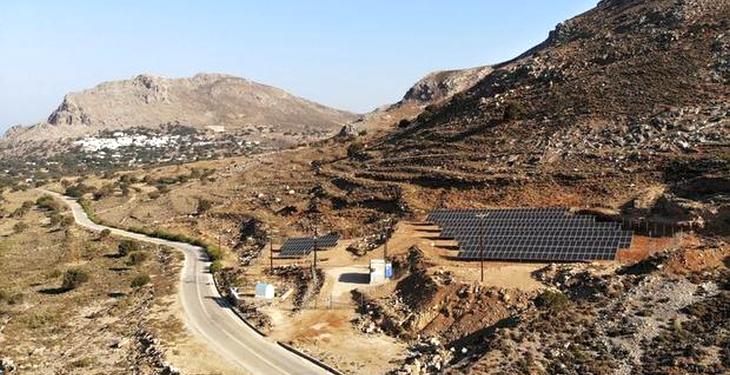The small Greek island between Rhodes and Kos has a winter population of 400 which swells to as many as 3,000 people in the summer, putting an impossible strain on its dilapidated power supply.
However, later this year when the blades of its 800-kilowatt wind turbine start turning, the small Greek island of Tilos will become the first in the Mediterranean to run exclusively on wind and solar power.
This summer, technicians are conducting the final tests on a renewable replacement system that will be fully rolled out later this year, allowing Tilos to run exclusively on high-tech batteries recharged by a wind turbine and a solar park, according to AP.
The EU plans to use the project as a blueprint for other small islands across the European Union that have limited grid connection to the mainland and it has largely funded the project, providing 11 million euros of the total 13.7 million-euro cost.
“The innovation of this program and its funding lies in the batteries — the energy storage — that’s what’s innovative,” project manager Spyros Aliferis said. “The energy produced by the wind turbines and the photovoltaics will be stored in batteries so that this energy can be used for the grid when there is demand.”
The batteries store power during sunny and windy conditions, releasing it during periods of heavy demand and lower production — such as at nighttime and the peak tourist season — to keep the grid powered up.
Currently, Tilos gets its energy from an underwater cable that runs from Kos to the island of Nisiros and on to Tilos. That creates an erratic, outage-prone service that routinely breaks appliances and has forced many businesses to rely on diesel generators.
While lacking the dazzle of other Greek islands like Mykonos and Santorini, Tilos — a 14-hour ferry ride from the mainland — is a quiet vacation spot that sees an average of 13,000 visitors a year. It’s known as a green island, popular with hikers and bird watchers, and most of it is now a protected nature reserve.
